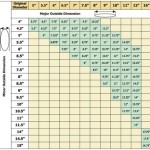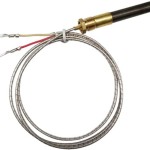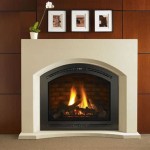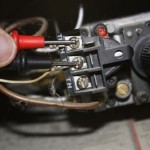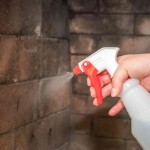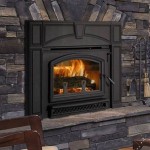Wood Burning Fireplace Installation: A Comprehensive Guide
The installation of a wood-burning fireplace represents a significant home improvement project, offering both aesthetic appeal and a supplementary heating source. However, it's a complex undertaking that requires careful planning, adherence to building codes, and a thorough understanding of safety regulations. This article outlines the key considerations involved in wood-burning fireplace installation, providing essential information to ensure a successful and safe outcome.
Before initiating any installation work, a comprehensive evaluation of the existing structure is paramount. This assessment should include the structural integrity of the walls and flooring adjacent to the intended fireplace location. Furthermore, the existing chimney, if present, needs a thorough inspection to determine its suitability for a wood-burning fireplace. The chimney’s height, diameter, and overall condition directly impact the fireplace’s draft and efficiency. Any deficiencies, such as cracks or obstructions, must be addressed prior to installation.
Local building codes and regulations govern the installation of wood-burning fireplaces. Compliance with these codes is non-negotiable and often dictates specific requirements regarding clearances to combustible materials, foundation support, and chimney construction. Contacting the local building department is necessary to obtain the required permits and to understand the specific regulatory requirements for the area. Ignoring these regulations can result in fines, delays, and potentially hazardous conditions.
Choosing the Right Fireplace and Chimney System
The selection of an appropriate fireplace insert or unit is a crucial decision. Pre-fabricated fireplaces offer a cost-effective and relatively easier installation process compared to traditional masonry fireplaces. These units are factory-built and designed for specific installation parameters, ensuring consistent performance and safety when installed correctly. Masonry fireplaces, while often more aesthetically pleasing, require specialized construction knowledge and significantly more time and resources.
The chimney system is inextricably linked to the fireplace’s functionality and safety. A properly sized and installed chimney is essential for efficient drafting and the safe removal of combustion byproducts. Improper chimney sizing can lead to backdrafting, smoke spillage into the living space, and increased risk of carbon monoxide poisoning. Stainless steel chimney liners are often recommended, particularly when connecting to an existing masonry chimney, as they provide superior corrosion resistance and longevity compared to traditional clay liners.
The type of wood used for fuel directly impacts the fireplace’s performance and the chimney’s condition. Seasoned hardwood, such as oak or maple, burns cleaner and produces more heat compared to softwoods or unseasoned wood. Burning green or wet wood creates excessive creosote buildup within the chimney, increasing the risk of chimney fires. Maintaining a readily available supply of properly seasoned wood is, therefore, an important aspect of responsible fireplace ownership.
Clearance to Combustible Materials and Safety Considerations
Maintaining appropriate clearances to combustible materials is a critical safety measure. Building codes specify minimum distances that combustible materials, such as wood framing, drywall, and furniture, must be kept away from the fireplace and chimney. These clearances are designed to prevent the ignition of nearby materials due to radiant heat or direct contact with hot surfaces. Non-combustible materials, such as brick or concrete, can be used as a barrier to reduce clearances, but their effectiveness depends on their thermal properties and thickness.
Proper ventilation is also essential for safe fireplace operation. The fireplace requires an adequate supply of air to support combustion. In tightly sealed homes, negative pressure can develop, drawing air down the chimney and causing smoke spillage. Providing a dedicated source of outside air to the fireplace can mitigate this issue and improve combustion efficiency. This is often achieved through an outside air kit that connects directly to the fireplace unit.
The installation of carbon monoxide detectors is a mandatory safety precaution. Carbon monoxide is a colorless and odorless gas produced during combustion. Malfunctions in the fireplace or chimney system can lead to the buildup of carbon monoxide in the home, posing a serious health hazard. Carbon monoxide detectors should be installed on every level of the house, particularly near sleeping areas, and tested regularly to ensure proper functioning.
Professional Installation vs. DIY
While some homeowners may consider a do-it-yourself installation approach to save on costs, the complexity and potential hazards associated with wood-burning fireplace installation strongly suggest engaging a qualified professional. Professional installers possess the necessary knowledge, experience, and tools to ensure a safe and code-compliant installation. They can also advise on the selection of the appropriate fireplace and chimney system, taking into account the specific needs and constraints of the home.
A professional installer will typically conduct a thorough site assessment, obtain the required permits, and ensure proper connections to the chimney and ventilation system. They will also verify that the fireplace meets all safety regulations and provide guidance on proper operation and maintenance. The cost of professional installation is often offset by the peace of mind that comes with knowing the fireplace has been installed correctly and safely.
Properly maintaining a wood-burning fireplace is crucial for its long-term performance and safety. Regular chimney inspections are necessary to detect and address any potential problems, such as creosote buildup, cracks, or obstructions. A qualified chimney sweep should clean the chimney at least once a year, or more frequently if the fireplace is used extensively. Additionally, the fireplace itself should be inspected regularly for any signs of damage or wear.
Flashing Installation and Weatherproofing
The area where the chimney penetrates the roof requires careful attention to flashing and weatherproofing. Flashing is a metal material that seals the gap between the chimney and the roof, preventing water from entering the building. The flashing must be properly installed and integrated with the roofing materials to ensure a watertight seal. Improperly installed flashing can lead to water damage, mold growth, and structural problems.
Various types of flashing are available, including step flashing, counter flashing, and base flashing. The specific type of flashing required will depend on the type of roofing material and the design of the chimney. A professional installer will be familiar with the different types of flashing and can ensure that the appropriate materials are used and installed correctly.
In addition to flashing, other weatherproofing measures may be necessary, such as applying a sealant to gaps or cracks in the chimney or roof. Regular inspections and maintenance of the flashing and weatherproofing will help to prevent water damage and extend the life of the chimney.

Fireplace Installation Full Service Chimney Serving Kansas City Area

How To Install A 3000 Wood Fireplace

Wood Burning Fireplaces Fireplace Installation Madison Wi Verona

New Wood Burning Prefab Fireplaces Complete Fireplace Installs

Fireplace Installations Near Dc Chimney Experts

Log Burner Installation Guide

Wood Stove Installation Diagram Diy

Lodi Wi Installing Fireplace Insert Remodel

Wood Fireplace S Installation Chimney Sweeps Of America

Chimney Installation Cookstove Community
Related Posts


